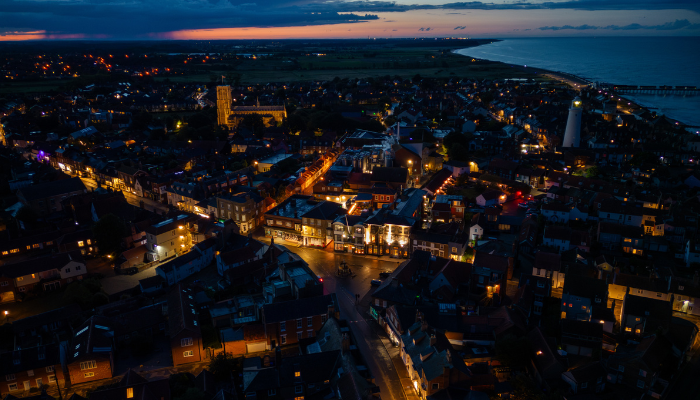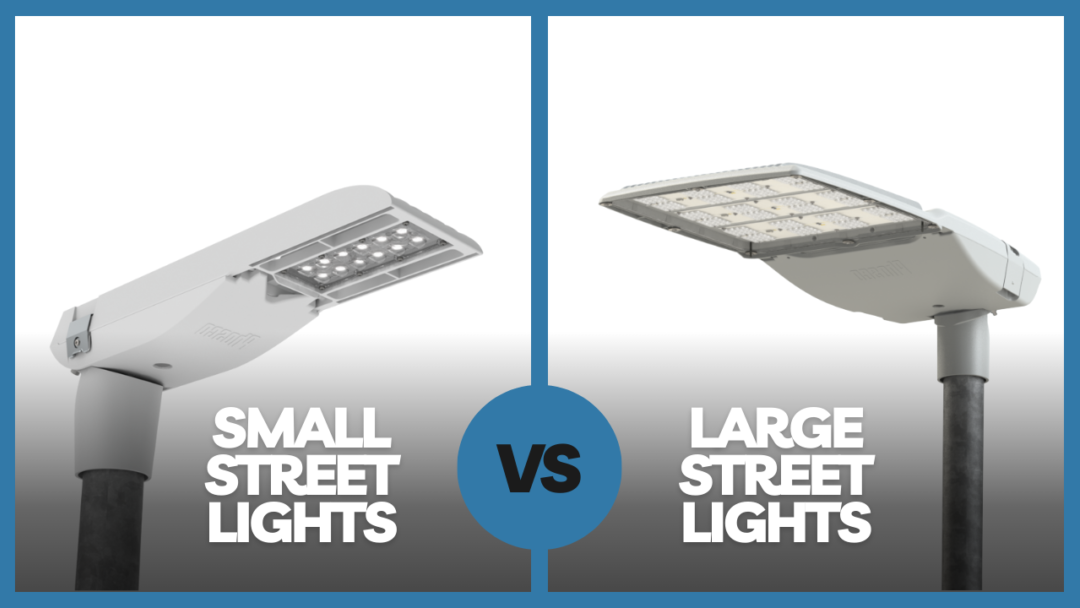In our modern, urban landscape, where the hustle and bustle never cease, streetlights stand as silent sentinels, illuminating our pathways as well as providing safety and security for the public throughout the night.
However, behind the steady glow of the latest LED lights lies the complex interplay of exciting technology, energy consumption and the inevitable cost. In this blog post, we’ll be delving into the intricacies of streetlighting costs, how they’re measured and the comparative expenses between small and large streetlights.
HOW MUCH DOES IT COST TO RUN A STREETLIGHT?
Street lighting is a vital component of modern urban infrastructure but comes with a price tag. The cost of running these lights encompasses various factors including installation, maintenance, energy consumption and replacement parts.
Among these, energy consumption normally forms a substantial portion of the expense, particularly in cities as they seek to balance the need for visibility with the imperative of energy efficiency.
HOW IS STREET LIGHTING MEASURED?
Efficiency in streetlights is typically measured in terms of lumens per watt (lm/W), representing the amount of light produced per unit of energy consumed. Higher lm/W ratios indicate greater efficiency, meaning you get more light output, for less energy input.
Modern LED technology, like what we see in CU Phosco Lighting products, has revolutionised street lighting efficiency, offering a significantly higher lm/W ratio compared to traditional lighting technologies, such as the high-pressure sodium (HPS) or metal halide lamps.
A COST COMPARISON: SMALL VS LARGE STREETLIGHTS
When it comes to street light costs, size matters. Small streetlights, often used in residential areas or on smaller roads, generally come with a lower installation and maintenance cost compared to their larger counterparts, which are found on major roads or industrial zones. However, the key differentiator lies in energy consumption.
Let’s consider a hypothetical scenario: comparing a small LED streetlight with a larger one. While the initial installation cost of the small streetlight may be lower, the larger streetlights higher output means it covers a larger area, potentially reducing the overall number of fixtures needed. Additionally, larger streetlights often incorporate more advanced control systems, such as dimming or motion sensors, further optimizing the energy usage.
Despite the higher upfront investment for larger streetlights, typically their efficiency and coverage may result in long-term cost savings. Also, when you factor in the lifespan of LED technology, around 100,000 hours, which far surpasses traditional lighting sources, the case for larger, more efficient streetlights become even more compelling.
CONCLUSION
Streetlighting is not just about illuminating the light; it’s about striking a fine balance between visibility, safety and fiscal responsibility. Understanding the costs associated with streetlighting, from installation to energy consumption, is crucial for local authorities and urban planners seeking to optimise their lighting infrastructure.
As technology advances and efficiency improves, the calculus of streetlighting costs continues to evolve. By embracing innovations such as LED technology and smart lighting systems, cities can illuminate their streets whilst simultaneously reducing their environmental footprint and saving on operational expenses. In the ever-evolving landscape of urban development, efficient and cost-effective streetlighting remains a beacon of progress.

